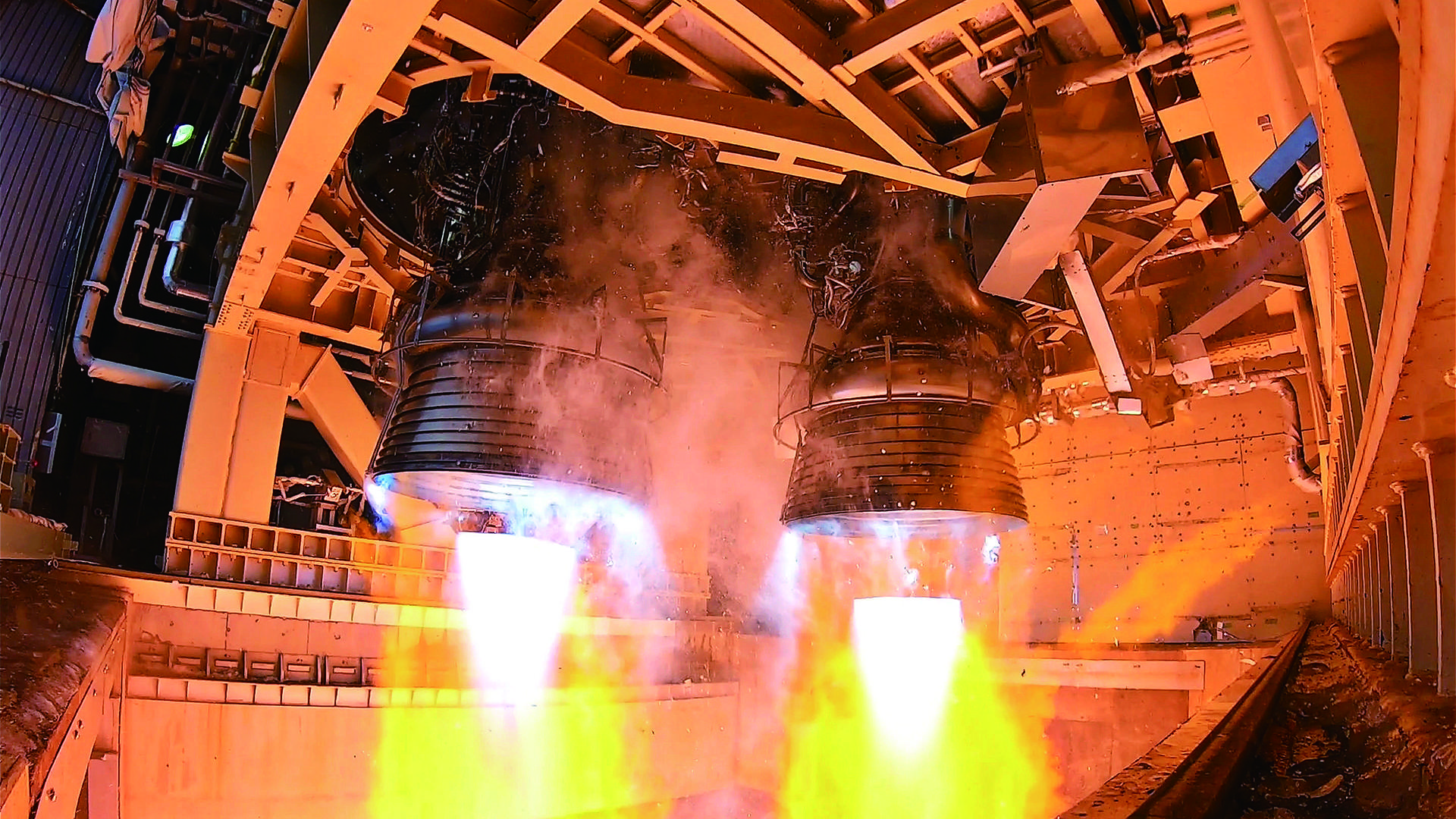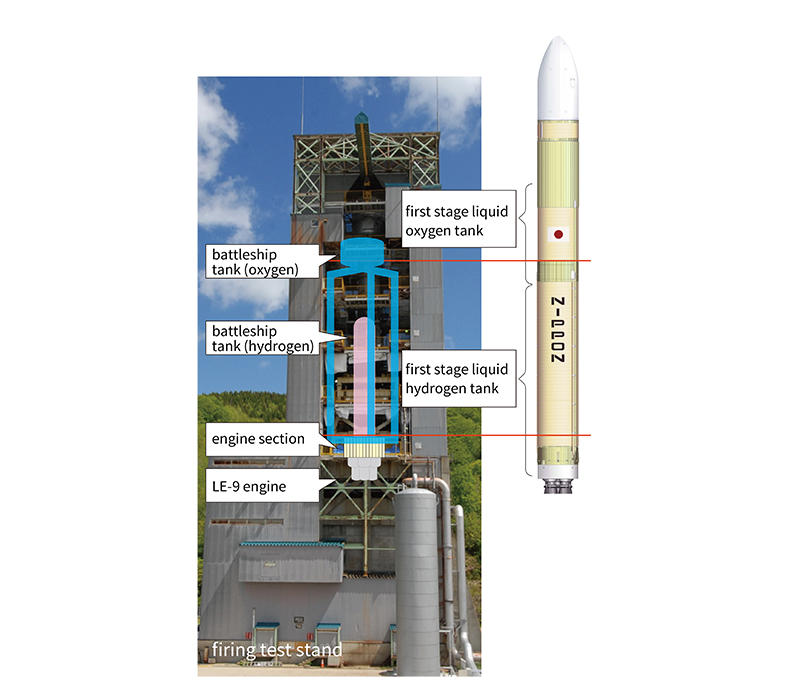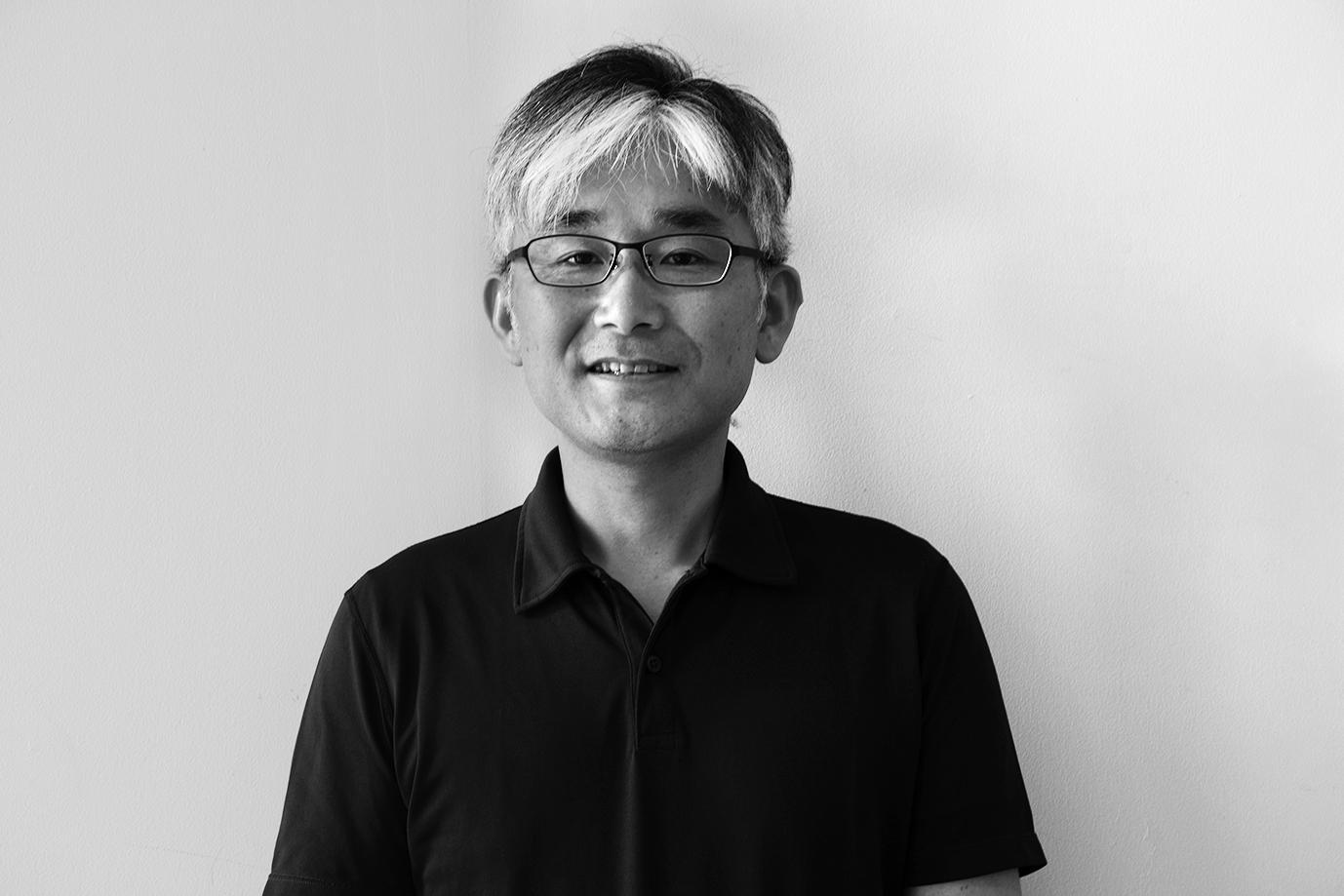
Space Transportation Technology Directorate

The crucial stage of new rocket development
The 4th BFT is a Success!
Firing test for a new rocket, realized by gathering together everyone's wisdom
Space exploration is not possible without the technology to transport people and things into space. The Space Transportation Technology Directorate that works with rockets, which are the only means for space transportation, is currently in the middle of developing the new H3 rocket. JAXA and many private companies are working together as one toward the goal of launching this rocket in FY2020.
On April 12, 2019, the fourth First Stage "Battleship Firing Test" or BFT, was held at Mitsubishi Heavy Industries' Tashiro Test Facility in Odate City of Akita Prefecture. The new LE-9 engine that is currently in development was used for this test. Before testing the three-engine formation that will be used for the first time ever on an H3 rocket, tests had been conducted repeatedly from January 2019 with a two-engine formation. This is a large-scale test that will be key to the development of the H3 rocket.
During the BFT, which is a firing test for the propulsion system, the fuel filled in the tank is supplied to the engine based on the assumed temperature and pressure of the flight, and tested to see if the engine will be fired without problems. The fuel tank on the actual rocket is made of aluminum alloy, but a sturdy and thick tank made of stainless steel is used during the test; this is where it gets the name "battleship" (implying that the tank is as tough as a battleship).
There are not many opportunities for conducting a BFT, since this test is only preformed when a rocket is being developed. The BFT this time was the first one held in about 10 years, since the development of the H-IIB rocket. Isao Kubota, who has also been involved in the BFT for the H-IIA rocket before that, said, "We made thorough preparations from the time of developing the testing plan, such as receiving various advice from people who had experience with performing a BFT. Since it has been a while since the last test, there were many aspects during the plan where I had to refresh my memory as we worked on it." Meanwhile, for Daisuke Yabusaki, this was his first experience working on a BFT. He commented, "I worked on it by learning from Kubota-san and others who have more experience than myself. I was relieved when the test was a success, but we have many more tests coming up, so we need to remain focused. We will make a thorough examination of the results from this test, and utilize what we learned toward the next test."
"Easy to use" rocket that incorporates user comments
In order to achieve stable operation of the rockets, what is essential is to have the rockets be used not only by the government, but also by the private sector. The H3 rocket is a next-generational rocket that answers the needs of the users, such as being adapted for launching diverse satellites of multiple body configuration, as well as enabling rapid launch and being offered at a low price. The H3 rocket also places importance on "convenience," such as making it easier to operate at the launch site, and reducing the burden on the satellite at the time of the launch. Kubota says, "What we're aiming for is a best-seller and also a long-seller."
"The H-IIA rocket, which is the first one that I worked on in its development, was launched more than 40 times. As technology improves and as you gain more experience, you acquire the wisdom to achieve what you had previously thought was impossible. I want to make the H3 rocket into a rocket that will be loved even more than the H-IIA rocket."
Yabusaki feels motivated about the future development of transportation technology, and says, "When the H3 rocket is safely completed, we must think about the next means of transportation. I would like to first gain experience through the H3 rocket, and make use of what I learn here toward future developments."
The development of the H3 rocket is proceeding at a rapid pace toward its launch in the next fiscal year. There will be many more large-scale tests like the BFT following after this one.

Profile
Isao Kubota
Associate Senior Engineer
H3 Project Team
Space Transportation Technology Directorate

Daisuke Yabusaki
Engineer
H3 Project Team
Space Transportation Technology Directorate

- Home>
- Global Activity>
- Public Relations>
- JAXA’s>
- JAXA's No.77>
- The 4th BFT is a Success!